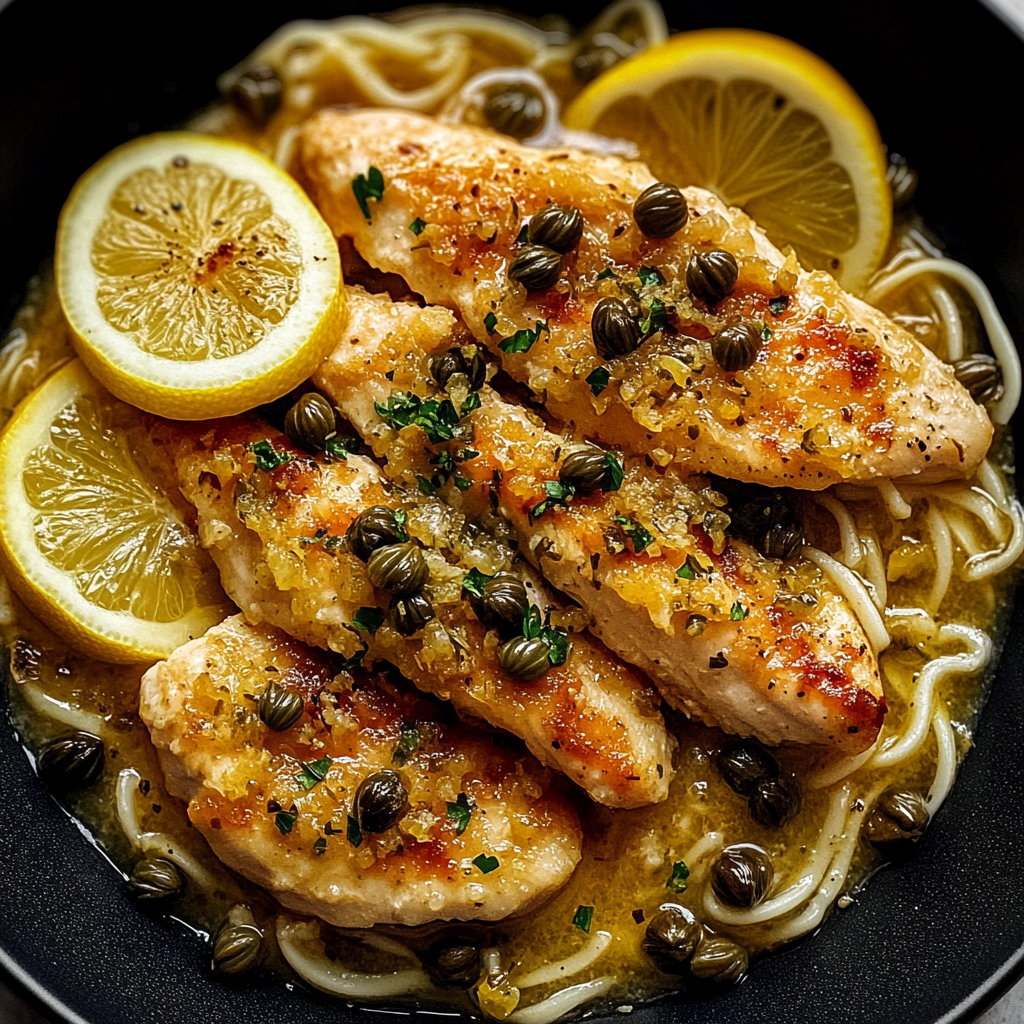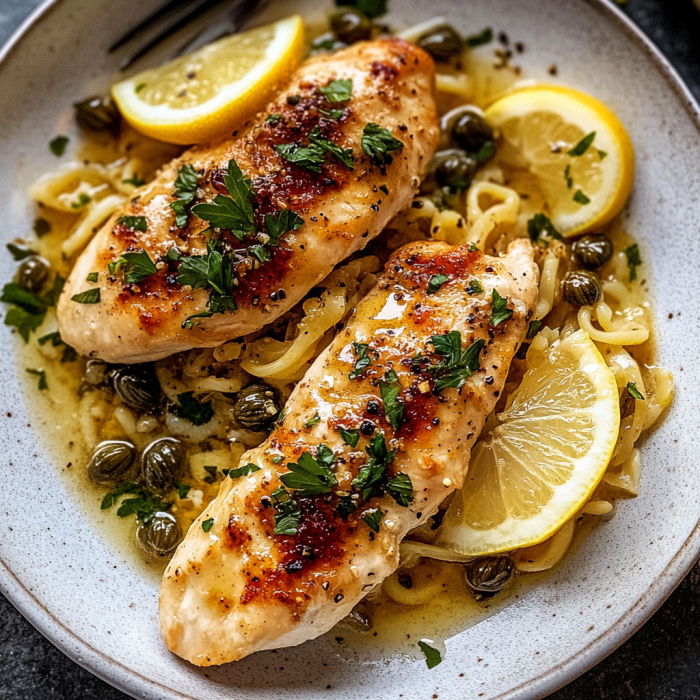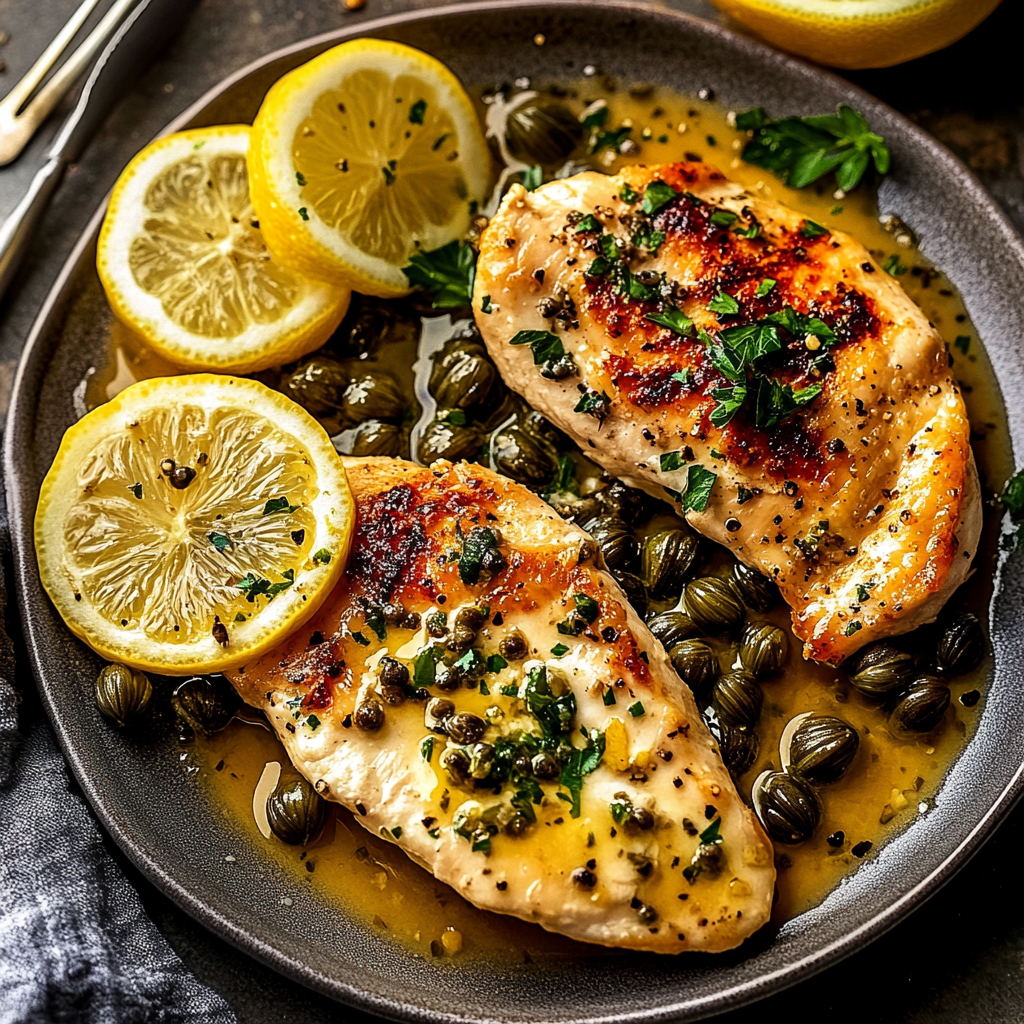 Pin it
Pin it
This chicken piccata recipe transformed my weeknight dinner routine with its perfect balance of lemony brightness and savory depth. Unlike many versions that leave you puckering from too much lemon, this one achieves the ideal harmony between tangy and rich flavors.
I discovered this recipe during a particularly hectic week when I needed something impressive yet simple. My family was so captivated by the golden crust and velvety sauce that it's now requested at least twice a month at our dinner table.
- Chicken breasts: Provide the perfect canvas for the delicate sauce and cook quickly for a weeknight meal
- Flour and parmesan: Create a golden crust that seals in moisture while adding savory notes
- Dry white wine: Forms the foundation of the sauce bringing acidity and depth
- Fresh lemon juice: Brightens the dish with essential citrus notes
- Capers: Add briny pops of flavor that balance the richness perfectly
- Butter: Creates silky texture in both the cooking process and final sauce
- Parsley: Contributes fresh color and a peppery finish
- Prepare the Chicken:
- Slice each breast into three even pieces for quicker cooking. Place between plastic wrap and pound to an even ½ cm thickness ensuring tender results and even cooking time. Drizzle with olive oil on both sides to help the coating adhere properly.
- Create the Coating:
- Mix flour, parmesan, salt, and pepper in a shallow dish. The combination creates a savory crust that will brown beautifully while protecting the delicate chicken. The parmesan adds umami depth that regular piccata often lacks.
- Pan Fry to Perfection:
- Heat oil and butter in a large skillet over medium high heat until the butter stops foaming. Cook chicken pieces for 3 to 4 minutes on the first side until deeply golden before flipping for just 1 minute on the second side. This prevents overcooking while ensuring a beautiful crust.
- Develop the Sauce:
- Wipe the pan quickly without removing the flavorful fond. Add wine and let it reduce by half capturing all the chicken flavors left in the pan. Add lemon juice and simmer briefly before adding butter cubes over low heat. Swirl rather than stir to create a glossy emulsified sauce with perfect consistency.
- Finish with Brightness:
- Stir in capers and parsley just before serving to maintain their vibrant flavor and color. The warm sauce will gently heat these ingredients without dulling their impact.
 Pin it
Pin it
I particularly love how the capers add tiny bursts of briny flavor throughout the dish. My daughter initially picked them out but now specifically requests extra capers after developing a taste for their unique contribution to the overall flavor profile.
Perfect Pairing Suggestions
This chicken piccata truly shines when served alongside starchy sides that can soak up the delicious sauce. Angel hair pasta tossed with a little olive oil and parsley makes an ideal base allowing the sauce to coat each strand. For a lower carb option consider roasted cauliflower or zucchini noodles which provide texture while letting the piccata remain the star.
Make Ahead Options
While chicken piccata is best enjoyed immediately after cooking you can prepare components ahead of time to streamline the dinner rush. Pound and slice the chicken up to 24 hours in advance keeping it covered in the refrigerator. The flour mixture can be prepared several days ahead and stored in an airtight container. When reheating leftover piccata add a splash of chicken broth to revitalize the sauce.
Wine Pairing
The ideal wine pairing enhances both the lemony brightness and the rich buttery notes in this dish. A crisp Pinot Grigio complements the citrus elements perfectly while a lightly oaked Chardonnay harmonizes with the buttery sauce. For something special consider a Vermentino which offers mineral notes that highlight the capers beautifully.
 Pin it
Pin it
Historical Context
Chicken piccata has its roots in Italian cuisine where the cooking method originally featured veal rather than chicken. The term piccata refers to the technique of slicing butterflying and flattening meat before cooking it quickly in a pan. Italian immigrants brought this preparation to America where chicken gradually replaced the more expensive veal making it accessible to home cooks. The addition of capers and lemon sauce maintained the bright vibrant flavors of Mediterranean cooking while adapting to new ingredients available in American kitchens.
Frequently Asked Questions
- → Can I substitute white wine in the sauce?
Yes, you can substitute white wine with low-sodium chicken stock or broth for a non-alcoholic option. The sauce will still have a delicious depth of flavor.
- → What type of chicken works best for this dish?
Skinless, boneless chicken breasts are ideal. You can also use chicken thighs or tenderloin. Adjust the cooking time accordingly for different cuts.
- → How do I ensure the chicken stays crispy?
Pat the chicken dry before coating it with the flour-parmesan mixture, and avoid overcrowding the pan while frying to maintain a crispy crust.
- → Can I make this dish gluten-free?
Yes, use cornstarch or a gluten-free flour blend as a substitute for regular flour in the coating. All other ingredients are naturally gluten-free.
- → What should I serve with Chicken Piccata?
This dish pairs wonderfully with pasta, rice, mashed potatoes, or even a fresh garden salad to balance its rich flavors.
